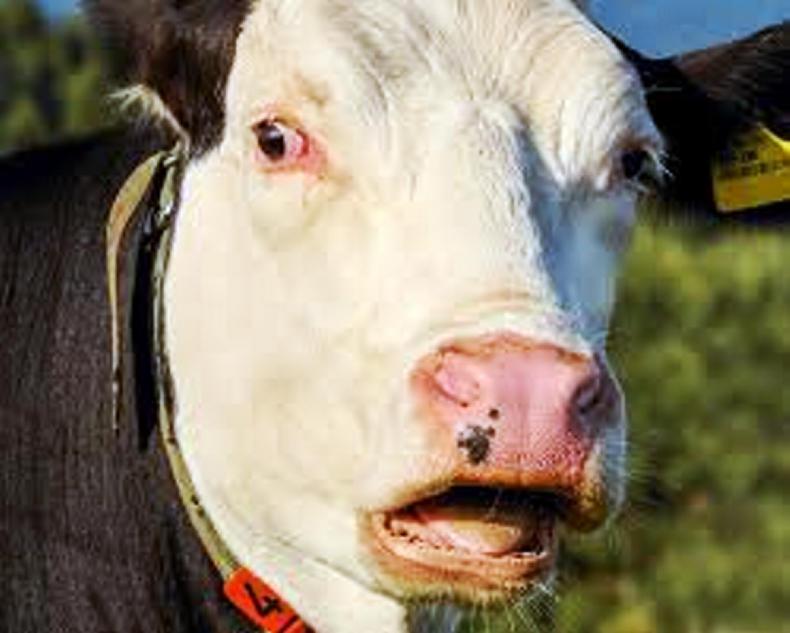There are over 20 serotypes of BTV and the clinical signs for the various seroptypes vary.
Bluetongue has not yet been diagnosed in Ireland. Until the mid 2000s, the disease was confined to the south of Europe. Bluetongue emerged in northern Europe in the mid 2000s and came as far as the UK. Climate change is considered to increase the risk of such midge-borne diseases occurring in Ireland.
Cause
This disease is carried by midges, and there are several species of midge in Ireland capable of carrying the disease. Specific wind conditions can facilitate the movement of infected midges for up to 400km, which means that specific weather conditions can facilitate the introduction of the disease into Ireland, from either northern France and or the south of the UK. Therefore, it is likely if the disease is introduced into Ireland, it is most likely to be introduced to the southeast of Ireland.
Symptoms
In cattle, clinical signs include sores and crusts on the face, sores in the mouth, red eyes and tears, drooling of saliva, sores and crusts on the teats, a drop in milk yield, hard patches on the skin, lameness and weight loss. In addition to these signs, swollen faces and tongues are a feature of sheep affected by BTV.
Treatment
There is no treatment.
Prevention and control
Bluetongue is a notifiable disease, which means there is EU and national legislation governing its control. It is important that the Department of Agriculture, Food and the Marine be notified promptly so that the necessary control measures are put in place as soon as possible so that the outbreak can be contained. In the event of an outbreak, control (20km), protection (100km) and surveillance (150km) zones are established around the infected holding. The movement of livestock is restricted within and between these zones. This has clear implications for the live export of cattle and sheep. Farmers are required to keep animals indoors during the midge season. The movement of cattle or sheep would be controlled within and from the control zones, including the 150km surveillance zone, and exports of live animals would be subject to restrictions. Therefore, this disease could have terrible impact on the trade of livestock in the event of an outbreak. Controls would be kept in place until there is no further risk of spread, but may be relaxed during the period when the insect vectors are not active (the vector-free period between December and April). Vaccination plays a key role in the containment of outbreaks, but these vaccines only become available in the event of an outbreak, or indications that an outbreak is very imminent.






 This is a subscriber-only article
This is a subscriber-only article










SHARING OPTIONS: